Day 1: Delhi
Arrive Delhi. On landing in the airplane terminal, you will meet our delegate and be exchanged to lodging. Day free for relaxation. Overnight in Hotel.
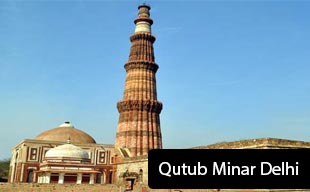
Day 2 : Delhi
Entire day city voyage through Old and New Delhi. Morning visit Qutub Minar worked by Qutub-ud-Din Aibek in 1199, Humayun's Tomb, India Gate (War Memorial Arch) and Lakshminarayan Temple - an advanced Hindu Temple. Additionally drive past President's House, Parliament House, Government Secretariat Buildings and Connaught Place strip mall. Evening visit Raj Ghat and Shanti Vana - the incineration locales of Mahatma Gandhi and Jawaharlal Nehru, Jama Masjid, Red Fort and drive past Chandni Chowk.
Day 3 :- Delhi/Bhubaneswar.
Last drive to visit Lalitgiri and Udaygiri ASI uncovered locales. Over night at Ratnagiri Toshali Resort. Morning exchange to airplane terminal to associate flight for Bhubaneswar. On entry, help and Drive to Lalitgiri.
LALITGIRI :- Lalitgiri, one of the most punctual Buddhist locales in Orissa, kept up a constant social arrangement beghoteling from the post Mauryan period (322– 185 BC) till thirteenth AD. Too this site kept up a persistent of quality of Buddhism, unbroken, from third BC to tenth Promotion. Lalitgiri have uncovered leftovers of an expansive stupa on the slope. Inside the stupa, two uncommon stone coffins were found with relics of Buddha; this was the principal such find in Eastern India. The stone coffins, similar to Chinese Puzzle boxes, made of Khondalite stone, uncovered three different boxes inside them, made of steatite, silver and gold separately; the gold coffin, which is the last one, contained a relic or dhatu as a little bit of bone. Likewise another fascinating find is that of an east-bound aspidal chaityagriha, worked of blocks, 33 by 11 meters in measure with 3.3 meters thick dividers. This building, the principal such Buddhist structure found in Odisha, contains a roundabout stupa at its inside. Additionally found were a progression of Kushana Brahmi engravings made on shells with cuts on moonstone at the outskirts of the structure.
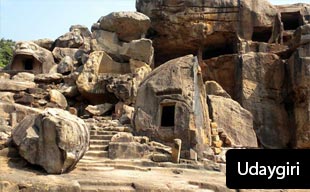
UDAYGIRI :- Udaygiri, the biggest Buddhist complex in Orissa. The historical backdrop of Udayagiri Buddhist complex isn't much known, however what is without a doubt is that it not as old as Ratnagiri or Lalitgiri. Most likely, it existed and Prospered between the seventh – twelfth AD. Late unearthing have uncovered various Buddhist fortunes. It is currently realized that the old name of the religious community here was Madhavapura Mahavihara. A substantial block cloister together with various Buddhist figures have been uncovered. There is additionally another block religious community which is still not uncovered separated from an inscripted ventured stone well and shake cut figures. The remainder of these is situated at the highest point of the slope behind. Bodhisattva figures and Dhyani Buddha figures are different fortunes recouped from this site. Removal work is as yet being done in the Udayagiri Buddhist complex.
Day 4 :- Ratnagiri/Langudi/Radhanagar/Kaima/Tarapur/Bhubaneswar Hotel.
A perfect place to have intercession at a young hour in the morning if somebody want.
RATNAGIRI :- The passageway to the main cloister has some mind blowing cut statues of Vajrapani and Lokeshwara, adorned on its dividers. There are figures from Hindu folklore also, which have stood the trial of time with a square-formed internal yard. The great 10 ft representation of Lord Buddha, occupied with contemplation which is put inside a withdraw chamber most likely takes a man to divine awareness. Pay special mind to the perfectly cut entryway board set inside the patio and other wonderful sculptural confirmations, scattered everywhere throughout the complex. The unearthings goes back to sixth Century AD. From Gupta Dynasty, and thought to be of Mahayana group . Last going by Langudi-Radhanagar-Kaima-Tarapur the most recent exhuming acclimating 'Puspagiri Vihar' achieve Bhubaneswar.
LANGUDI HILLS :- Langudi slope was a noticeable Buddhist seat of discovering that thrived until the eleventh century in India. This Buddhist archeological site decorated with arrangement of shake cut Buddhist stupas and a few early medieval Buddhist landmarks and holy places. At Langudi slopes the remains of a block stupa and a substantial religious community still exist. All things considered, the Buddhist stays on the slope demonstrate that Langudi was a huge focus of the Hinayana, Mahayana and Vajrayana groups of Buddhism.
RADHANAGAR : - Radhanagar was an antiquated illustrious city. An all around outlined city, Radhanagar ROCK CUT STUPA and BUDDHA AT LANGUDI. Held mud bulwark same as other old urban areas in India including Ujjain, Kosambhi and Sisupalgarh. Ashoka's Dhauli Rock Edict says that Kalinga's imperial central command amid Asokan period was 'Tosali'. As indicated by the current Radhanager uncovering, various engravings and other validating confirmations imply Radhanagar as the capital city of 'Tosali'. The current uncovering has uncovered the remaining parts of the Radhanagar Fort.
TARAPUR : - The current Tarapur uncovering uncovered the recognizable proof of 'Kesa Stupa' and the gift of 'Bhikhu Tapusa' for developing Tarapur Stupa have been unraveled. Two dealers of Utkal Tapassu and Bhallika turned into the main lay followers of Lord Buddha, as IIIrd/IInd BC. STUPA AT TARAPUR. Eight modest bunches of his hairs were what Buddha gave them, getting rice cake and nectar consequently from them. Last on the shippers stored the hairs in a Stupa (Kesa Stupa) in their local Place.
KAIMA HILLS :- The most intriguing stays of Kaima is a one of a kind shake cut elephant that rises unexpectedly finished the lower rise on the eastern furthest reaches of the slope, confronting the stream Kimiria. It has been cut out from live shake with fantastic and profoundly naturalistic craftsmanship. The speculative date of the picture has been allocated to the Mauryan time, around the third century B.C. Shake CUT ELEPHANT AT KAIMA HILLS.
Day 5:- Full day Excursion to Dhauli 'Kaling War Field', Kuruma Buddhist exhumed site and Konark Sun Temple. Bhubaneswar Hotel.
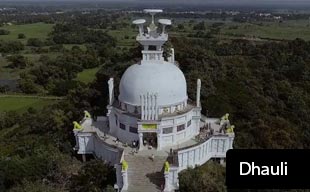
DHAULI : - Ashoka had an extraordinary soft spot for Dhauli, where the fight was battled. The Daya waterway is said to have turned red with the blood of the many expired after the fight, and empowered Ashoka to understand the greatness of ghastliness related with war. He got dwelling places for the hermit, directions engraved for authorities, elucidated the fundamental standards of dandaniti for the general population, gave exceptional status to his new kingdom including the stupas at Dhauli. The Rock Edicts found here incorporate two separate Kalinga Edicts. In Kalinga Edict VI, he communicates his anxiety for the "welfare of the entire world". The stone cut elephant over the Edicts is the most punctual Buddhist model of Odisha. The stone elephant demonstrates the creature's foreparts as it were, despite the fact that it has a fine feeling of frame and development. On the highest point of the slope, an amazing white peace pagoda has been worked by the Japan Buddha Sangha and the Kalinga Nippon Buddha Sangha in the year 1972 SUN TEMPLE, KONARK: - One of the most dazzling landmarks of religious importance, a genuine magnum opus of design gladly remains as Sun Temple at Konark. Here the dialect of stone annihilations the dialect of human. The Sun Temple of Konark, regularly called as the Black Pagoda, Built in thirteenth century by King Narasimhadeva-II, of the Ganga Dynasty, the sanctuary is composed in the state of a huge chariot with seven stallions and twelve wheels, conveying the sun God. It is a plentiful demonstration of the aesthetic brilliance of the time. Imagined as a gigantic chariot drawn by seven lively steeds on 12 sets of stunningly adorned wheels- - after the legendary seven steed chariot of Sun God- - the sanctuary was one of a kind in its design and execution.
KURUMA VILLAGE : - This Buddhist unearthed cloister having twelve cells and the open yard at the middle. 7.5 kilometers from the world well known Sun sanctuary at Konark, "Kuruma" is a little town. Late unearthing here have exposed the memory of some antiquated artifacts like the picture of Buddha situated in Bhumisparsa Mudra alongside the picture of Heruka and a 17 meters in length block divider (block estimate 22 cm *17 cm). Researchers are of supposition this was once of the destinations containing Buddhist stupas portrayed by Hiuen T'Sang. PARSWA DEVATA (GOD) in Oriya Language is "JAMANTAKA" and "ABALOTIKESWAR" and "BAMAN" is Called Three Devata (THREE BIKRAM). This place was reviewed by Archeological Department in the time of 1971 and there is a major lake named as "JAMADHARMA Pond".
Day 6: BhuBaneswar/Patna
Morning exchange to air terminal to associate flight for Patna by means of Kolkata. On entry, help and exchange to hotel. Evening trip to Vaishali (55 kms) - known for Buddha Stupas, Ashoka Pillar and Bawan Pokhar Temple. This is where Buddha declared his Mahaparinirvana and happens to be the origin of Lord Mahavira. Overnight at hotel.
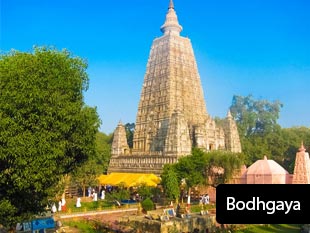
Day 7: Patna/Nalanda/Rajgir/Bodhgaya
Morning drive to Bodhgaya (140 kms/4 hrs) enroute going to Nalanda and Rajgir. Nalanda-an awesome focal point of Buddhist learning and a standout amongst the most really popular college fortresses of antiquated circumstances. Rajgir, it was at one time the old capital of the effective Kingdom of Magadha. From the out-skirts of Rajgir, a noteworthy street prompts Gridhakuta or vultures top where the Buddha lectured. Here the principal Buddhist Council was held after the Lord's Mahaparinirvana. On entry, check in at lodging.
Day 8: Bodhgaya
Entire day visit - Bodhgaya, in the territory of Bihar, figured as the most critical Buddhist journey focus, is where Lord Sakyamuni (Gautama Buddha) went into contemplation subsequent to being moved by the sufferings of humanity. The monster Bodhi Tree (Peepal) that we see today is accepted to have developed from the first Bodhi Tree under which, sitting on the raised stage, Prince Siddharth reflected lastly achieved Nirvana. At that point there is Chaukramana, the Jewel Walk, where it is trusted that the Buddha walked while in profound idea. Likewise visit Shaivite Monastery and acclaimed Jagganath Temple. Overnight at hotel.
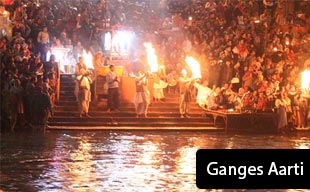
Day 9: Bodhgaya/Varanasi
Morning leave Bodhgaya for Varanasi (250 kms/7 hrs). Varanasi is acclaimed for Hindus and Buddhists as its closeness to Sarnath. On entry exchange to hotel. Overnight at hotel.
Day 10: Varanasi
Early morning vessel outing on the waterway Ganges, a ship journey from ghat to ghat. Individuals bathe at a young hour in the morning to offer the supplications to the rising sun. Return to hotel for breakfast. Later touring voyage through the city including the Bharat Mata Temple with a major alleviation guide of India in marble, Durga Temple, Tulsi Manas Mandir, Banaras Hindu University which has an Art Gallery and the Mosque of Mogul Emperor Aurangzeb based on the site of an antiquated Hindu Temple. Evening trip of Sarnath - where Lord Buddha gave his first sermon. Visit the vestiges, the stupa, the Buddhist sanctuary and the (Museum shut on Fridays).
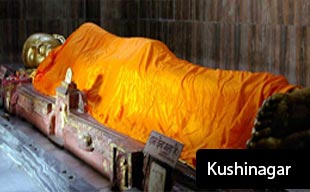
Day 11: Varanasi/Kushinagar
Drive to Kushinagar (260 kms/8 hrs). Upon entry check in at hotel. Kushinagar is where Lord Buddha accomplished Mahaparinirvana in his eighteenth year. Overnight at lodging.
Day 12: Kushinagar/Lumbini
Morning visit Kushinagar, one of the foremost focuses of Buddhist journey, is the place of Mahaparinirvana. The landmarks of Kushinagar are arranged in three particular involving the principle site of the Nirvana Temple, the focal stupa and encompassing cloisters. Later drive to Lumbini (in Nepal) (170/4 hrs). Upon landing check in at lodging.
Day 13: Lumbini/Sravasti
Morning visit the town of Lumbini in Nepal, where the Queen Mahamaya brought forth Prince Siddhartha who later turned into the Buddha. More than 2000 years back the Emperor Asoka set up a dedicatory column here. The column conveys the engraving - Here the Buddha was conceived. Another place of worship safeguards an old picture portraying the nativity of the Lord. Later drive to Sravasti (around 150 kms/04 hrs) and check in at hotel.
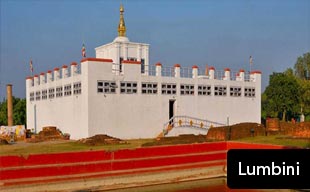
Day 14: Sravasti/Gonda/Delhi
Morning visit holy city for Buddhists. Buddha himself spent many summers here to convey vital sermons. Here Anathapindaka was worked in the garden of Prince Jeta for the gathering of the Buddha. Today, the remaining parts uncovered vouch for the prospering state of this sacrosanct spot in the Gupta period. Drive straight to Gonda railroad station (40 kms) to associate prepare # 2553 Vaishali Express dep. 19:40 hrs. Overnight on prepare
Day 15: Delhi/Onward Destination
Arrive Delhi at 06:30 hrs. Exchange to universal airplane terminal to interface flight back home.
